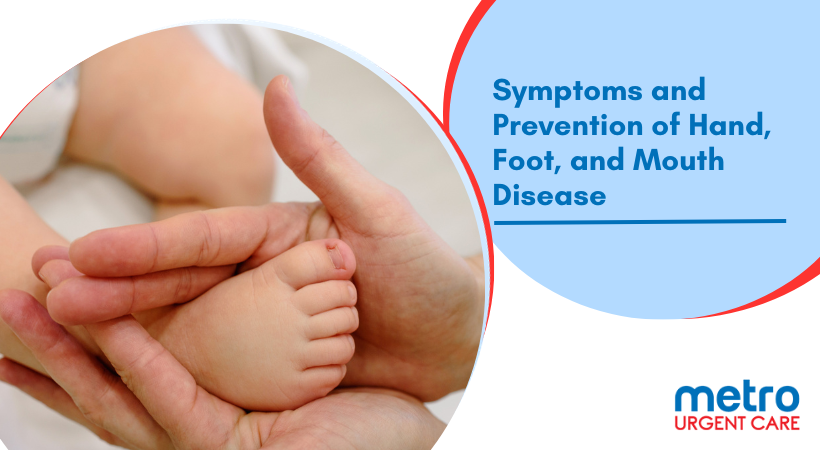


Hand, Foot, and Mouth Disease (HFMD) is a viral illness that usually affects kids under five but can also impact older children and adults. It's caused by various viruses, mainly Coxsackievirus, and shows up as a rash and sores on hands, feet, and inside the mouth.
According to the Centers for Disease Control and Prevention (CDC), HFMD is widespread, with thousands of cases yearly in the United States. In children, especially those attending daycare centers or preschools, HFMD spreads rapidly due to close contact and shared spaces. Their developing immune systems make them more vulnerable, and their habit of touching contaminated surfaces worsens the spread.
In this blog, we will learn about this viral infection, its symptoms, causes, treatment options, and proactive prevention steps to lessen its impact.
Hand, Foot, and Mouth Disease (HFMD) is a highly contagious viral infection that is especially common in daycare centers and schools due to the close contact among children. This infectious illness, primarily caused by various enteroviruses, spreads rapidly through several means:
Understanding these transmission pathways helps implement effective preventive measures and minimize HFMD outbreaks among children.
HFMD, usually seen in kids, can also affect adults, sometimes causing worse symptoms. Adults might have more intense reactions due to a few reasons:
Though it's rare for adults to get HFMD, practicing good hygiene, avoiding contact with infected individuals, and seeking medical help can help manage symptoms and reduce the chances of severe effects.
HFMD is mainly caused by various enteroviruses, among which Coxsackievirus is the most common. Several risk factors contribute to the transmission and likelihood of catching HFMD:
Hand, Foot, and Mouth Disease (HFMD) shows specific symptoms that are easy to spot with these simple steps:
HFMD is commonly caused by viruses from the Enterovirus genus, especially Coxsackievirus A16 and Enterovirus 71. Here are some key causes:
Hand, Foot, and Mouth Disease (HFMD) treatment primarily focuses on managing symptoms, as the illness is typically self-limiting and resolves on its own within a week to ten days. Here are some key aspects to effectively treat HFMD:
Preventative measures, such as regular handwashing, avoiding close contact with infected individuals, disinfecting surfaces, and promoting good hygiene practices, play a crucial role in reducing the spread of HFMD. While the disease is generally mild and self-limiting, complications can arise, especially in cases involving Enterovirus 71, highlighting the importance of promptly monitoring and managing severe symptoms.
HFMD is a common viral illness among young children, causing fever, sore throat, and distinctive rashes or blisters on the hands, feet, and inside the mouth. Though not usually life-threatening, its symptoms are distressing and last about 1-2 weeks with care.
Early recognition and prevention are crucial. Practicing good hygiene, especially handwashing, reduces its spread. Avoiding contact with infected individuals, especially in crowded places, can help prevent transmission. Additionally, promoting these practices in schools, daycares, and communities can significantly reduce the spread of the disease.
Seeking medical attention when necessary is vital, especially if the symptoms worsen or complications arise. While HFMD typically runs its course without specific treatment, certain cases may require medical intervention, especially if there are signs of dehydration due to difficulty swallowing or refusal to eat or drink.
Struggling with Hand, Foot, and Mouth Disease (HFMD)? Seek relief at Metro Urgent Care. Our experienced team specializes in managing HFMD symptoms. The walk-in urgent care clinic now has two locations in Chicago: 5406 W. Fullerton Ave. (773) 341-2897 and 3235 W. Montrose Ave. (773) 669-0005. Don't endure discomfort alone – get the care you need for a speedy recovery.
Contact us today, and let us help you feel better!
Source: CDC